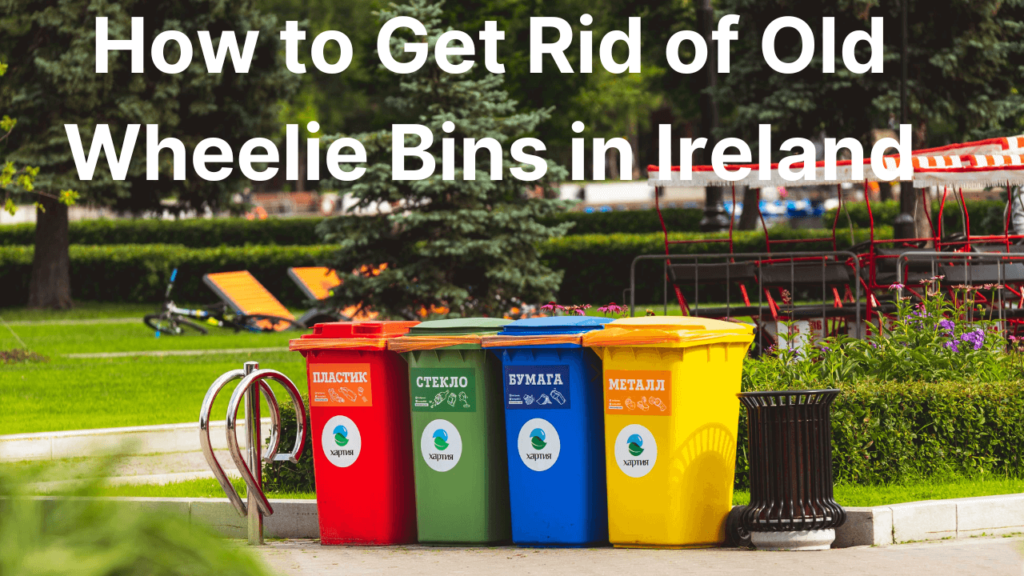Starlings are small, invasive birds known for their loud calls and large flocks, often creating problems for homeowners and farmers in Ireland. While they can be fascinating to watch, their behavior can lead to noise pollution, property damage, and health concerns. This guide will help you understand why starlings can be a nuisance and outline effective, humane methods to get rid of them.
1. Understanding the Starling Problem
Starlings (scientific name: Sturnus vulgaris) are highly social birds that flock together in large numbers, especially during the winter months. They can:
- Nest in buildings, clogging vents and chimneys.
- Compete with native birds, driving them away.
- Damage crops by feeding on grains, fruits, and vegetables.
- Spread diseases through their droppings, which can host harmful pathogens.
| Problem | Details |
|---|---|
| Noise Pollution | Large flocks can be extremely noisy. |
| Health Hazards | Droppings may spread harmful bacteria. |
| Property Damage | Clogged vents and chimneys from nests. |
| Impact on Native Species | Outcompetes native birds for food. |
2. Why Control Is Necessary
It’s important to manage starling populations because:
- Protecting Property: Prevent nests in vents, chimneys, and gutters.
- Safeguarding Native Birds: Starlings compete with native species for food and nesting spaces.
- Preventing Crop Damage: Farmers lose significant yields to starling flocks.
- Health and Safety: Their droppings can cause diseases like histoplasmosis.
3. Preventing Starlings from Nesting
Prevention is the first step in controlling starlings. Here’s how you can make your property less attractive to them:
Block Access Points
- Install mesh screens over chimneys, vents, and other openings.
- Seal gaps in walls and roofs where starlings might enter.
Remove Nesting Material
- Regularly inspect and clean out any starling nests.
- Clear debris like twigs and leaves from gutters and roof areas.
Limit Food Sources
- Avoid leaving pet food or open garbage outside.
- Use bird feeders designed for smaller species to exclude starlings.
4. Humane Methods to Deter Starlings
The goal is to discourage starlings without harming them or other wildlife.
1. Use Visual Deterrents
- Reflective objects: Hang CDs, aluminum foil strips, or reflective tape around your property.
- Predator decoys: Place plastic owls or hawks in problem areas, but move them frequently to maintain effectiveness.
2. Install Sound Devices
- Ultrasonic devices emit high-frequency sounds that starlings dislike.
- Noise machines that mimic predator calls can also scare them away.
3. Modify Bird Feeders
- Replace standard bird feeders with caged feeders that only allow small birds to access food.
- Avoid seeds that attract starlings, such as cracked corn or sunflower seeds.
4. Use Netting
- Cover fruit trees, crops, or other vulnerable areas with bird netting to keep starlings away.
5. Set Up Nesting Boxes for Native Birds
- Install nesting boxes with small entry holes that starlings can’t use.
5. Long-Term Solutions for Starling Control
If starlings persist, these strategies can provide long-term relief:
1. Habitat Modification
- Trim trees and bushes near your home to reduce roosting spots.
- Keep outdoor areas clean and free of food scraps.
2. Work with Professionals
- Hire pest control experts to assess and implement tailored solutions.
3. Protect Farms
- Farmers can use laser deterrents or sound cannons to keep starlings away from crops.
- Consider using crop covers or scare balloons to protect fields.
| Method | Effectiveness | Cost | Best For |
|---|---|---|---|
| Reflective Deterrents | Moderate | Low (€10-€30) | Homes and small gardens |
| Ultrasonic Devices | High | Moderate (€50) | Homes and farms |
| Netting | High | High (€100+) | Farms and fruit trees |
| Professional Services | Very High | High (€200+) | Persistent infestations |
How to Get Rid of Starlings on a Farm Or Garden?
Starlings can cause significant problems for farmers by damaging crops, consuming livestock feed, and spreading diseases. Here are the main strategies to effectively and humanely control starlings on your farm:
1. Protect Your Crops
- Use Bird Netting: Cover crops with netting to prevent access.
- Install Reflective Deterrents: Hang reflective tape, old CDs, or aluminum strips around fields to scare starlings.
- Use Scare Balloons: Place balloons with predator-like eyes in the fields to deter flocks.
2. Safeguard Livestock Feed
- Store Feed Securely: Keep feed in sealed containers or covered bins.
- Feed Livestock Indoors: Minimize exposure by feeding animals in enclosed areas.
- Clean Spilled Feed: Regularly remove leftover feed to avoid attracting starlings.
3. Deter Roosting
- Trim Trees: Remove or thin dense foliage near barns and silos to eliminate roosting sites.
- Install Spikes: Place bird spikes on barn rafters or ledges to discourage nesting and roosting.
4. Use Sound and Visual Deterrents
- Broadcast Starling Alarm Calls: Play recordings of starling distress calls to scare flocks.
- Install Ultrasonic Devices: Use devices that emit high-frequency sounds to deter birds.
5. Employ Active Scaring Techniques
- Use Laser Scare Devices: Laser beams effectively disrupt and scare away flocks at dusk and dawn.
- Noise Cannons: Periodically use propane cannons to scare starlings, but rotate their location to maintain effectiveness.
6. Seek Professional Help
- For severe infestations, contact pest control professionals who specialize in humane bird removal.
Summary Table
| Method | Effectiveness | Cost | Best Use |
|---|---|---|---|
| Bird Netting | High | Moderate (€100+) | Crop protection |
| Reflective Deterrents | Moderate | Low (€10-€30) | Fields and open areas |
| Laser Scare Devices | High | High (€200+) | Nighttime roosting areas |
| Propane Cannons | Moderate | Moderate (€150) | Large farms |
| Professional Services | Very High | High (€300+) | Severe infestations |
By combining these methods, you can effectively manage starling populations on your farm Or Garden without harming the ecosystem.
How to Get Rid of Starlings in Trees?
Starlings often roost in trees, creating noise, mess, and damage. Here are the key methods to deter them:
1. Use Visual Deterrents
- Hang reflective objects like CDs, aluminum strips, or reflective tape in the trees.
- Place predator decoys such as plastic owls or hawks in and around the trees.
2. Create Noise
- Use bird distress calls or predator sounds to scare them away.
- Set up wind chimes or noise-makers near the problem trees.
3. Prune the Trees
- Thin out dense branches to reduce attractive roosting spots.
- Remove nearby shrubs or overgrowth to minimize cover.
4. Install Tree Netting
- Cover smaller trees with bird netting to block access.
5. Apply Non-Toxic Repellents
- Spray trees with bird-safe, non-toxic repellents to make them less appealing.
6. Use Laser Scare Devices
- Shine green or red laser beams into the trees at dusk to disturb the birds and encourage them to leave.
6. Common Myths About Starling Removal
1. “Starlings Will Leave on Their Own.”
- Reality: Without intervention, starlings often return to the same nesting sites year after year.
2. “Killing Starlings Solves the Problem.”
- Reality: Killing them disrupts the ecosystem and often has little long-term effect. Humane deterrents are more effective.
3. “All Bird Feeders Are Bad.”
- Reality: Properly designed bird feeders can attract native species while excluding starlings.
7. FAQs About Starling Control
1. Why are starlings considered a problem in Ireland?
Starlings are invasive birds that cause noise pollution, property damage, and harm to native bird populations.
2. Can starlings be removed humanely?
Yes, humane methods like deterrents, netting, and habitat modification are effective and ethical.
3. Are starlings protected in Ireland?
Starlings are not fully protected, but it’s essential to use humane and legal methods to manage their populations.
4. How can I stop starlings from eating at my bird feeder?
Use caged bird feeders or feeders with weight-sensitive perches that close under a starling’s weight.
5. What is the best way to stop starlings from nesting in my chimney?
Install a chimney cap or mesh screen to block access and remove existing nests.
Conclusion
Getting rid of starlings in Ireland requires a combination of prevention, humane deterrents, and long-term strategies. By making your property less attractive to these birds and protecting native species, you can create a healthier, more balanced environment.
If you’re dealing with a severe infestation, don’t hesitate to consult professionals who can provide effective solutions tailored to your situation. Let’s work together to manage starlings responsibly and preserve Ireland’s unique biodiversity.

Hi, I’m Tanvir, the founder and author of Explore Ireland Now. With a deep love for Ireland and its rich culture, history, and landscapes, I created this site to share everything that makes this beautiful country worth exploring. Whether you’re a local looking for hidden gems or a traveler planning your next adventure, I provide insightful guides, tips, and recommendations to help you experience Ireland to the fullest.
From stunning landscapes to vibrant cities and quaint villages, Ireland is full of wonders waiting to be discovered. Through my personal experiences and research, I aim to bring you the most up-to-date information and inspiration for your journey.
Thank you for visiting Explore Ireland Now—I hope my content helps you uncover all that this incredible country has to offer! If you have any questions or need travel advice, feel free to reach out.



